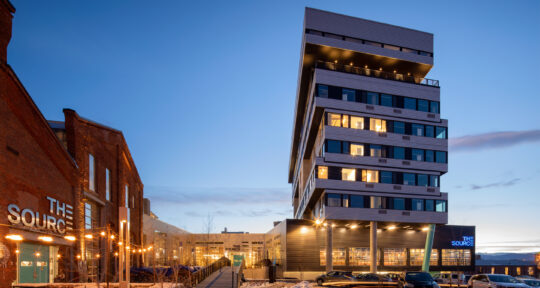New Mexico may be best known for hatch chiles and hot air balloons, but this Southwestern state is also overflowing with Native American history, home to two national parks, and has one of only a few singing highways in the U.S. And if all of that wasn’t enough, the Land of Enchantment is also the epicenter of UFO culture and houses the World’s Largest Pistachio.
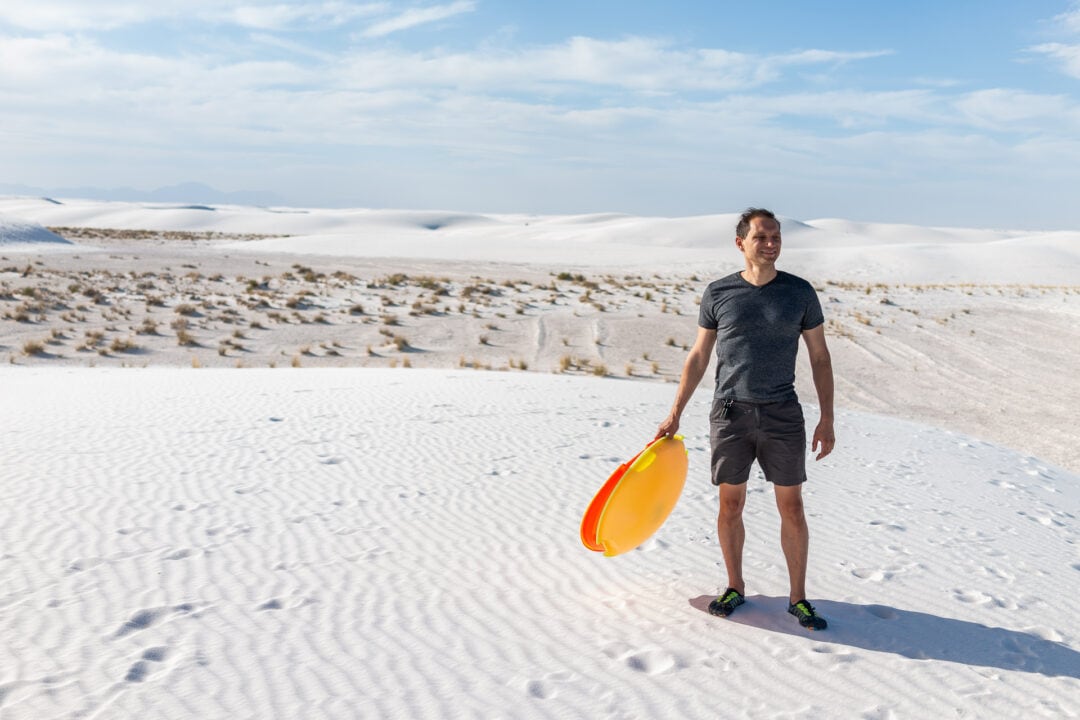

1. White Sands National Park
While national parks often conjure up images of dense forests, shimmering lakes, and miles of wooded hiking trails, White Sands National Park in south-central New Mexico offers just the opposite. As the name implies, the park is blanketed with snow-white sand, and its dunes are perfect for hiking, picnicking, and sledding. Yes, sledding. Buy a sled at the visitor center (or bring your own) and whisk your way down the powder-soft dunes. Pro tip: Sand sledding requires a steeper hill than snow sledding so make sure you have enough clearance at the bottom to stop safely.
The park has plenty of desert hiking trails to keep you busy—choose from easy-breezy boardwalk jaunts, multi-hour desert hikes, and full-day wilderness explorations—but regardless of the type of hiking you do, be sure to stay until the sun goes down. The park is known for its sunsets, so bring a blanket and settle in for a kaleidoscope of colors jumping out from behind the sky-high dunes in the distance.
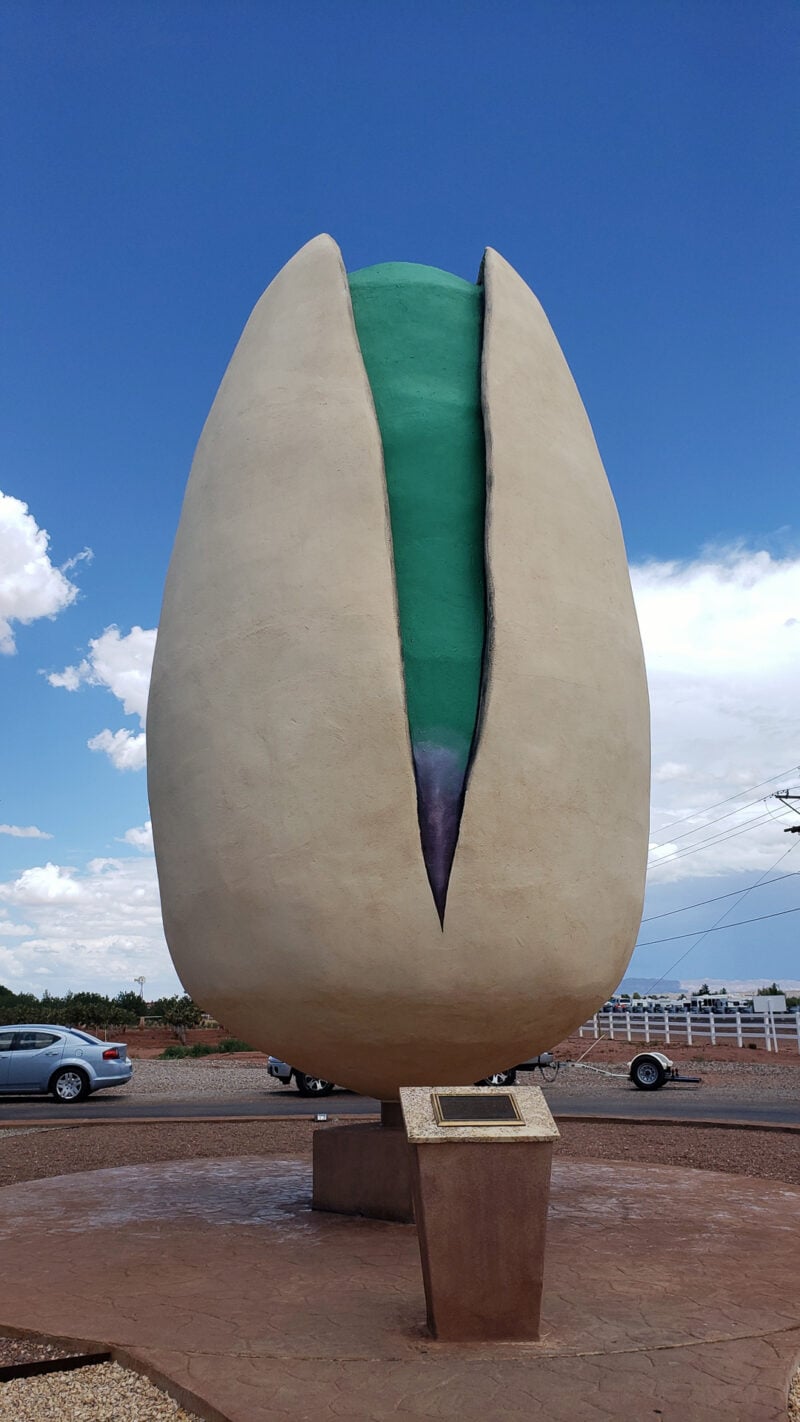

2. PistachioLand
White Sands National Park is about a 50-minute drive from Las Cruces, New Mexico, which is a convenient base to overnight. Here you’ll find good food, beautiful biking, and some of the largest pecan orchards in the country. The tree-lined roads leading to Stahmann Pecans are especially picturesque, and if you get a chance, consider renting a bike from Outdoor Adventures to explore the area on two wheels.
Pecans aren’t the only nut the region is famous for, however—about 20 miles northeast of White Sands National Park you’ll find a pistachio-themed roadside advertisement built by a local pistachio nut salesman. The 30-foot-tall structure required 35 gallons of paint and holds the title of the “World’s Largest Pistachio.”
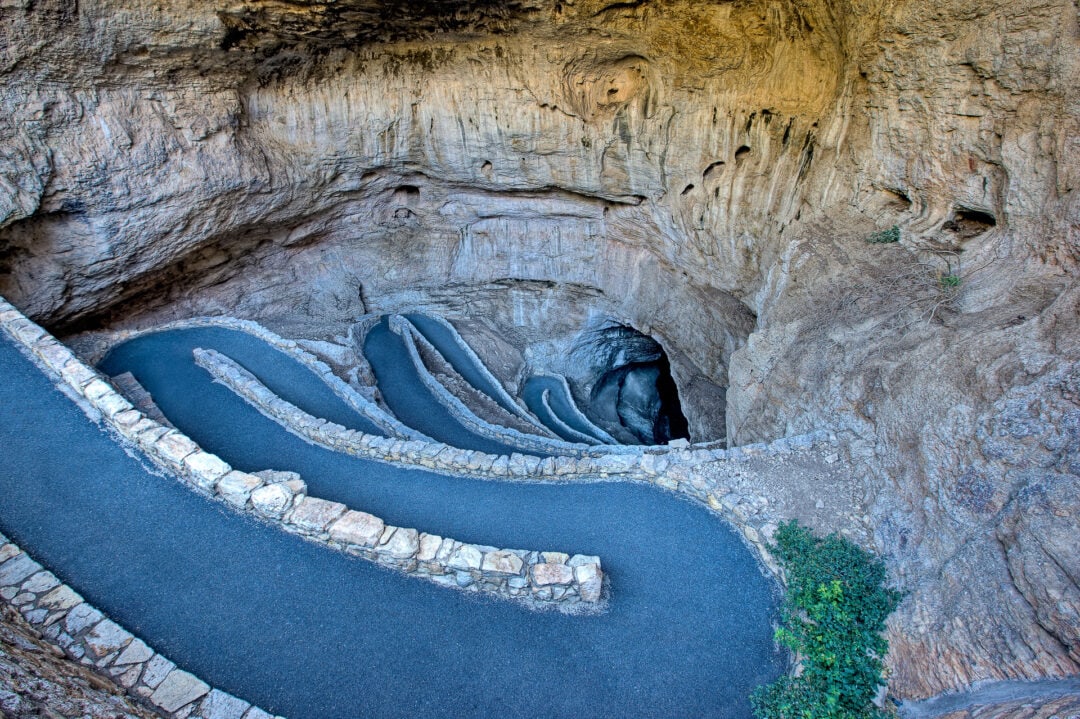

3. Carlsbad Caverns National Park
About 3 hours east of Las Cruces is Carlsbad Caverns National Park, one of the longest, largest, and deepest underground cave systems in the entire world. Forget admiring from a distance; in Carlsbad Caverns National Park, natural rock trails and man-made boardwalks get you up close and personal with thousands of stalagmites, stalactites, and unique rock formations.
You can take an elevator down 75 stories to the “Big Room” (where you’ll find most of the formations), or head to the Natural Entrance and hike 1.25 miles down. The hike takes about an hour and runs along a rock and cement trail that’s mostly smooth and slightly damp, but not slippery. You can then hike back out or take the elevator up.
Relatively few visitors make time for the handful of above-ground desert hikes in the park but if you have the time, speak with the rangers to find a trail that meets your interest and physical abilities (some trails are long and can be challenging during hot summer months). Even if you don’t hike, the 10-mile Walnut Canyon Desert Drive takes about an hour and gives you a good feel for the surrounding Chihuahuan Desert.
The park is currently limiting capacity by requiring timed entry tickets, so it’s best to make a reservation in advance. Online reservations cost $1 but don’t include park admission, which is $15 (or free with an annual America the Beautiful pass).
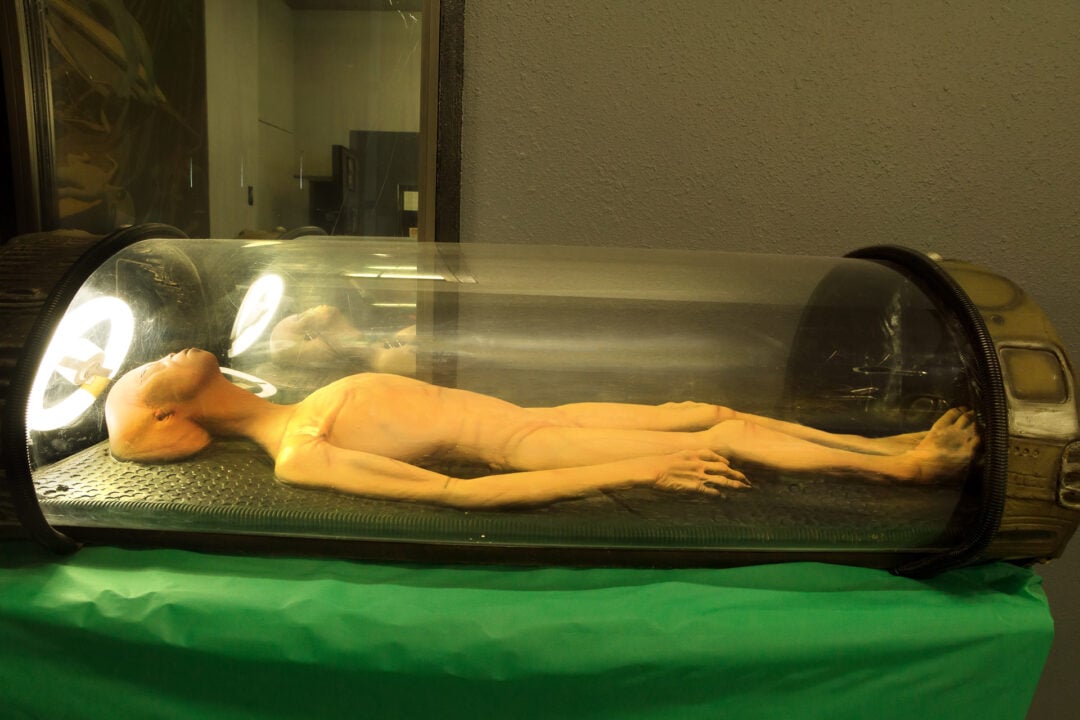

4. International UFO Museum and Research Center
No visit to New Mexico is complete without stopping in Roswell. Even if you’re not visiting during the annual UFO Festival, the city maintains an extraterrestrial theme year-round. Even the local McDonald’s is shaped like a UFO, has alien statues both inside and outside the restaurant, and features space-themed characters in the children’s play area.
The International UFO Museum and Research Center, which receives nearly 200,000 annual visitors, demonstrates why the city is considered the UFO capital of the U.S. Inside, you’ll find a mix of UFO photography, kitschy dioramas (snag a selfie with an alien autopsy), and highly-detailed educational displays that attempt to explain the infamous Roswell Incident.
5. MIA/POW Park
One of the few non-UFO attractions in Roswell is a fascinating stop if you know the site’s bizarre history, which doesn’t appear on any of its informational plaques. MIA/POW Park harkens back to World War II when thousands of German prisoners of war were held in a POW camp just outside the city. Though most of the prisoners labored on farms, some paved the Spring River (which runs through the present-day park) with stone as part of a flood control project. Some of the prisoners arranged rocks to form the outline of an Iron Cross, a military decoration adopted by Nazi Germany. Rightfully enraged citizens covered up the symbol but it’s now exposed and on view in the park, which serves as a memorial to prisoners of war and missing soldiers everywhere.
About eight blocks from the park is another of the few non-alien-themed attractions in the city. The Miniatures and Curious Collections Museum is a strange (and strangely intriguing) mix of collections. The one-room museum is lined with shelves and tables overflowing with collections of miniature cars, trees, Army action figures, dolls, and dioramas dedicated to Christmastime, the circus, and just about anything and everything in between.
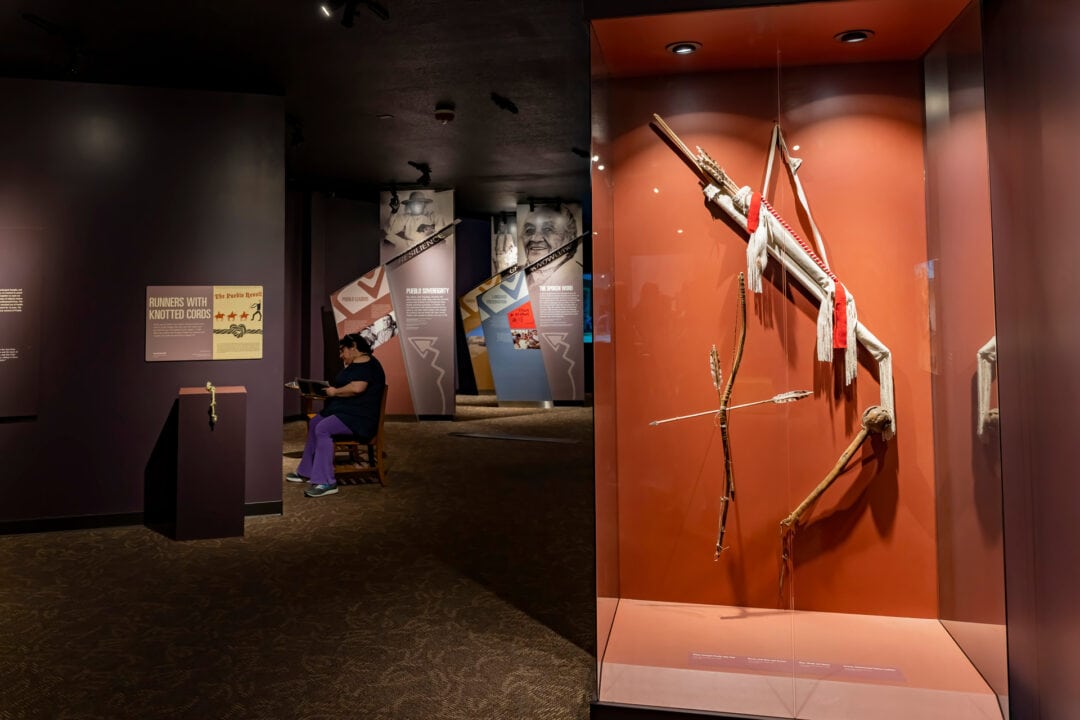

6. Indian Pueblo Cultural Center
Indigenous inhabitants across the Southwest are often referred to as “Pueblo Indians” or “Pueblo People,” but the term doesn’t refer to a single tribe. When the Spanish first encountered Native Americans in the 1500s, in what is now New Mexico and Arizona, the tribes were living in villages that the Spanish named “pueblos.” The type of living arrangement and lifestyle was distinct because the “Pueblo Indians” were settled tribes, not nomadic, like many other tribal communities.
Albuquerque’s Indian Pueblo Cultural Center, with its collection of art and artifacts and on-site restaurant specializing in traditional foods, is dedicated to preserving and perpetuating Pueblo culture. As its motto goes, the center is “the gateway to the 19 Pueblos of New Mexico.” As New Mexico’s pueblos remain closed to the public in order to protect residents from the COVID-19 pandemic, the center is the best way to learn about Pueblo history and culture.




7. Anderson Abruzzo International Balloon Museum
As the home of the world’s largest hot-air balloon festival, Balloon Fiesta, Albuquerque is the place to go hot-air ballooning. If you choose to stay on the ground, you can still learn about the history of ballooning, see balloons on display, and read about adventurous pilots who have sailed across entire oceans in hot-air balloons at the Anderson Abruzzo International Balloon Museum.
While you’re on the north side of town, visit Los Poblanos Historic Inn and Organic Farm. Even if you don’t overnight at the inn, which has stunning views of the Sandia Mountains and the farm’s own lavender fields, you can still soak in the smell of the lavender, grab a bite to eat at the restaurant, and stock up on lavender body scrub, lavender creamed honey, and green chile jam in the farm shop.
8. Musical Highway
When riding across a short set of rumble strips along the old Route 66 outside of Albuquerque, you might be surprised by what you hear. In 2014, New Mexico’s Department of Transportation partnered with the National Geographic Channel to encourage drivers to slow down on the otherwise unremarkable stretch of Route 66. The solution? To install a series of rumble strips that, if driven over at precisely the right speed—a conservative 45 miles per hour—the vibration of the wheels going over the strategically-placed strips would sound like “America the Beautiful.”
As a result of new asphalt being installed, part of the strip is no longer intact, and local authorities have since removed all of the signage to alert drivers of the Musical Highway. That said, if you slow down and place your tires just right (and possibly double back if you miss it the first time), you can still hear a good chunk of the song. To find the strip, exit off Highway 40 (the main route from Albuquerque) and head eastbound on Route 333, which is part of old Route 66. The rumble strips are located between mile markers 4 and 5, near exit 170.
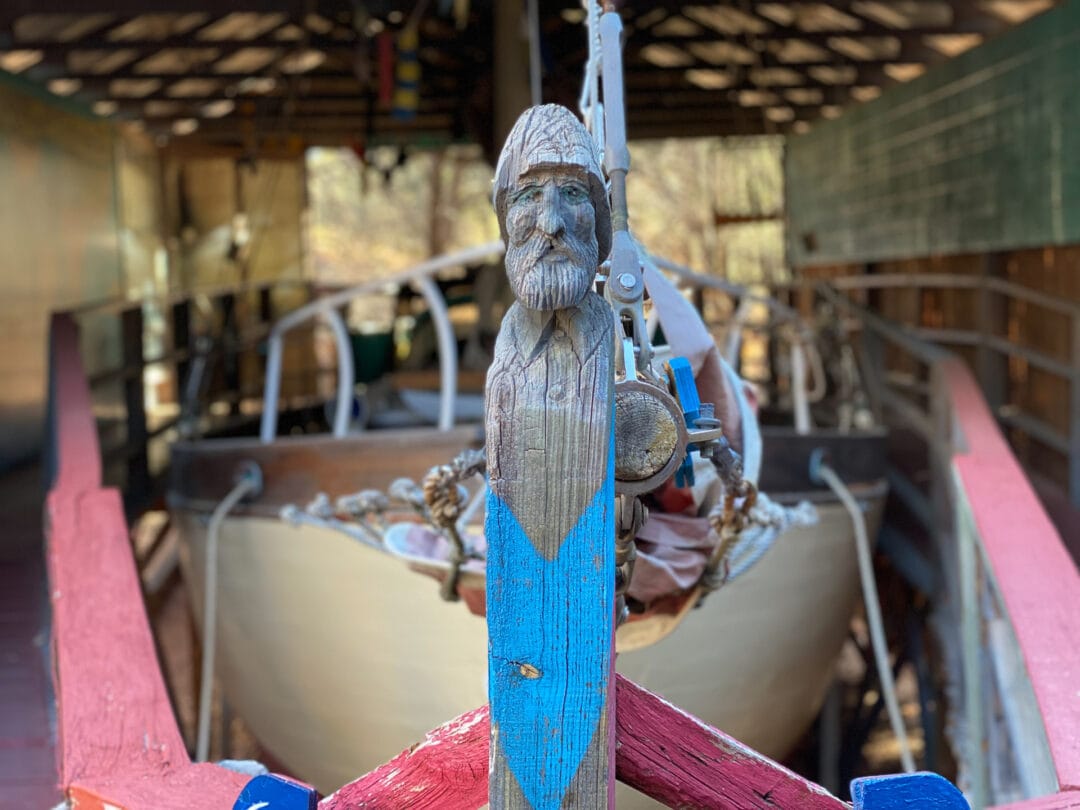

9. Tinkertown
While working at New Mexico’s State Fair and painting circus signs and carnival rides, Ross Ward and his wife Carla, who worked as a potter, began collecting bottles along the side of the road. According to Carla, their home became a sort of neighborhood recycling center from the early ‘80s until the mid-’90s as the couple amassed the large collections of glass bottles that they used to craft into the roadside attraction they named Tinkertown.
When Ross passed away from Alzheimer’s in 2002, Carla became the museum’s sole caretaker, operations manager, and maintenance supervisor. She takes pride in showing visitors her late husband’s creations and gives him full credit, ensuring everyone knows he was a self-taught artist and the origin of the intricately-painted wagons, miniature old western towns, circus dioramas, and walls made out of hundreds of glass bottles that envelop the space.
Note that the museum is closed in the winter because the indoor buildings are not heated and the outdoor exhibits are often covered in snow.
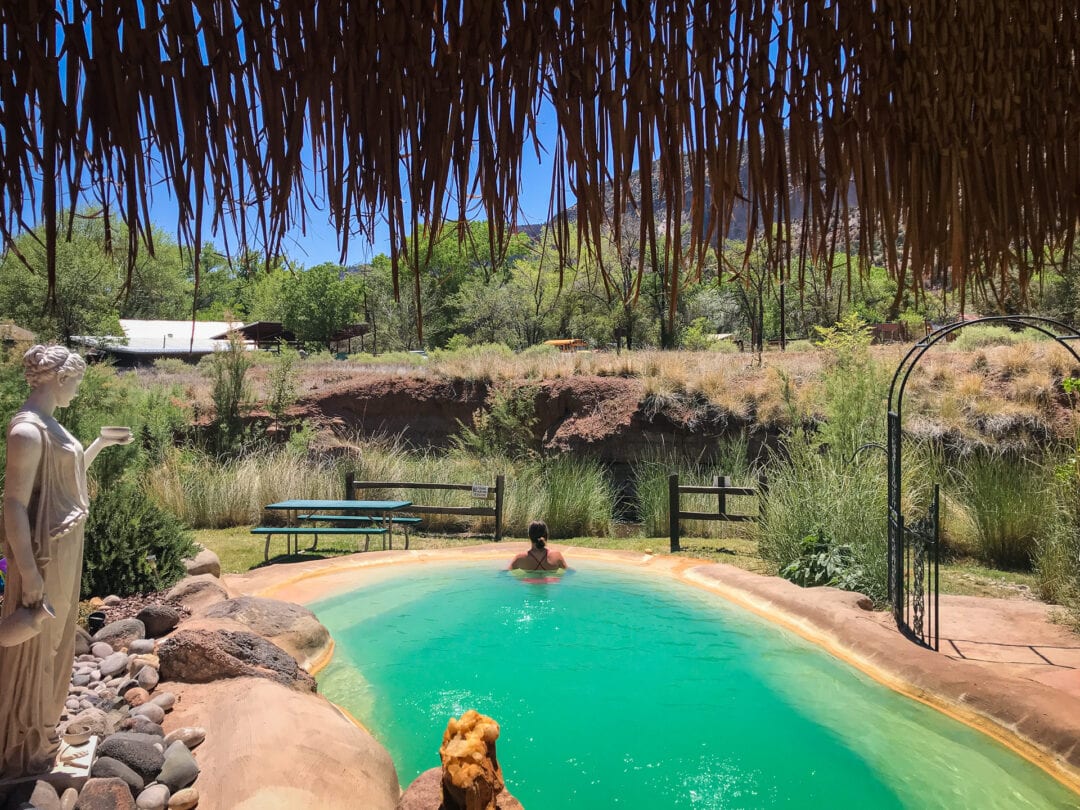

10. Jemez Hot Springs
New Mexico’s hot springs may not be as well-known as those found in its northern neighbor, Colorado, but the Southwestern state can bubble with the best of them. Several free, all-natural hot springs are scattered around the Jemez region, about an hour north of Albuquerque, but if it’s chilly out or you don’t want to have to hike to the spring, Jemez Hot Springs is your best bet.
The tiny resort looks like a hippie pool party and if you can’t get enough of the mountain views and therapeutic waters, book a room in the inn. Otherwise, you can just show up—even without a towel or bathing suit, since the resort rents both—and jump into the perfectly hot pools. If you want to indulge in a bit more nature, head further north for a forest hike or waterfall swim at the nearby Jemez National Recreation Area or Bandelier National Monument.

